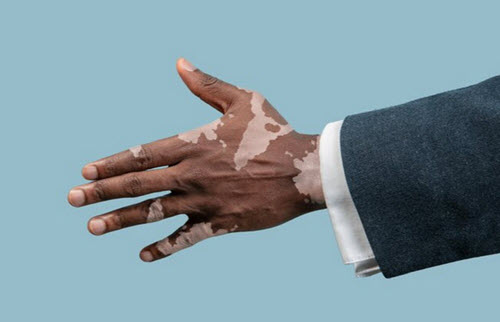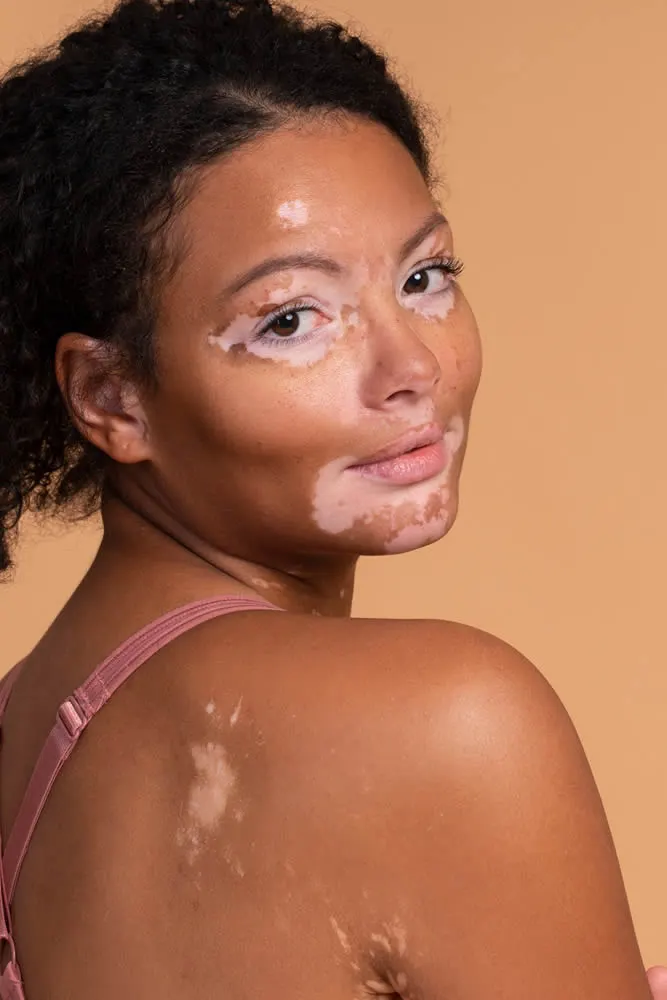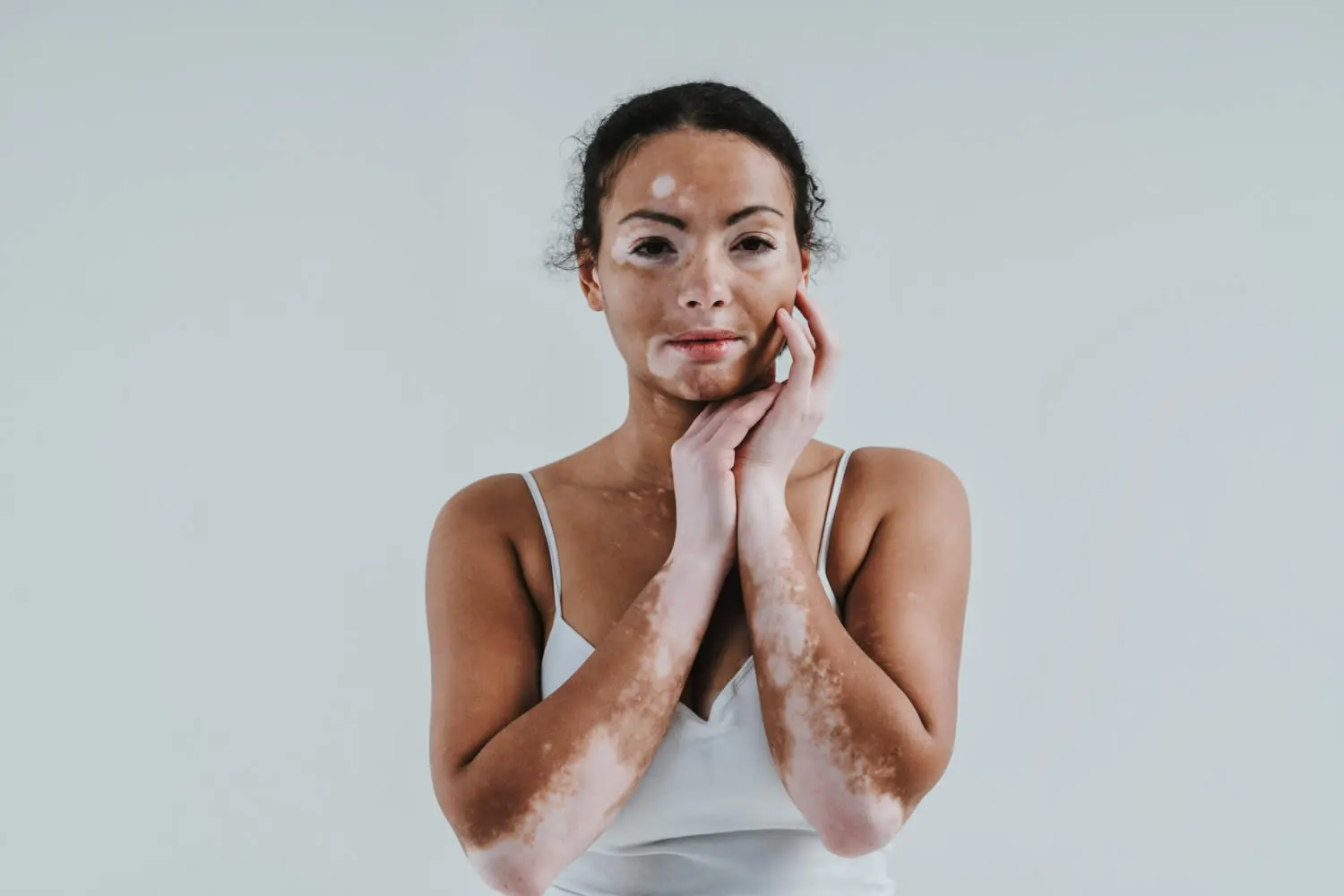What is Vitiligo
A skin condition that affects pigmentation, vitiligo occurs when white patches develop anywhere on the skin. With vitiligo, melanocytes, the pigment-forming cells, are destroyed by the immune system, which makes skin loses its pigmentation. Usually, people develop vitiligo between the ages of 10 and 40, with the condition affecting both men and women.

What are the signs and symptoms of Vitiligo
The usual sign of vitiligo is areas without pigment that appear as white patches on the skin. Vitiligo can appear anywhere on the body, but it usually develops first on areas of the body that are exposed to the sun.
What are the causes of Vitiligo
When melanin, the dark pigment in the epidermis that gives your skin its normal color, is damaged, missing or not produced, the involved patch of skin stays white. If vitiligo occurs in more than one location, white patches develop in these areas as well. Exactly why vitiligo develops is unclear, but it appears to have a hereditary component and may have something to do with the immune system.
What treatments are available at the dermatologist for Vitiligo
Dermatologists offer various treatments for vitiligo, a skin condition characterized by the loss of pigment in certain areas of the skin. The choice of treatment depends on the extent and location of the vitiligo, as well as individual preferences and response to therapy. It’s important to note that while some treatments may help restore skin color, they may not provide a permanent cure, and the results can vary from person to person.
What are some myths and misconceptions about Vitiligo?
Vitiligo is a skin condition that causes white patches on the skin due to the loss of pigment cells. Some common myths and misconceptions about vitiligo are:
- Vitiligo is caused by diet, sun damage, skin bleaching, or skin diseases like skin cancer, leprosy, or albinism.
- Vitiligo is contagious and can spread through contact, saliva, or intercourse.
- Vitiligo only affects dark-skinned people or people with mixed-race parents.
- Vitiligo is 100% curable or incurable.

FAQ About Vitiligo
Can vitiligo be cured?
There is no cure for vitiligo, but the symptoms can be managed with treatment. The goal of treatment is to restore color to the affected areas of skin.
Can vitiligo lead to other health problems?
Is there a dermatologist near me in Stockton that offers treatment for vitiligo?
Yes. At our Stockton dermatology office we offer treatment for vitiligo to patients from Stockton and the surrounding area. Contact our office today to schedule an appointment.

